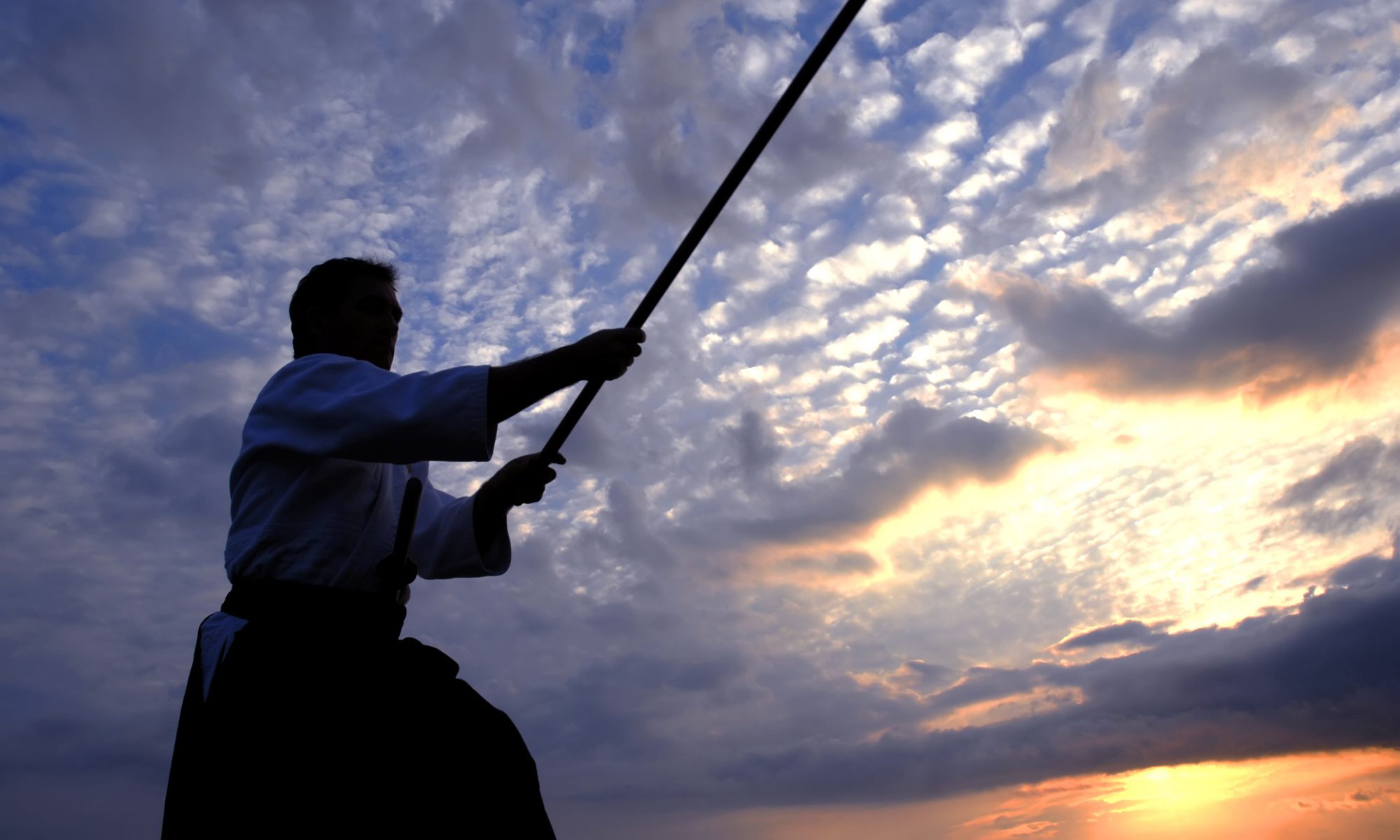OVERVIEW OF AIKIDO MOVEMENTS AND TECHNIQUES
Aikido movements emphasize flexibility and balance. The aim of the aikidoist is to be in complete control of their mind and body and to maintain a calm, alert posture. The continuous and flexible motion with originates at the hips is like the performance of a dance – a graceful, spherical motion. The beauty of Aikido movements comes from the coordinated motion of the entire body – each part contributing to the integrated sequence of the movement.
The joint locking techniques, such as those applied to the wrist or elbow, flex the joints in the direction of natural bending. They are in harmony with the natural flexing and, although such techniques are painful and effective, they result in no permanent damage to the joint.
AIKIDO TECHNIQUES, PRONUNCIATION AND MEANING
IKKYO | ee – kyoh | (1st pin technique) turning partner and making him/her drop to the ground using by controlling partner’s elbow and wrist
NIKKYO | nee-kyoh | (2nd pin technique) bends partner’s wrist in two angles and cuts through the center of the body making him/her drop to the ground
SANKYO | sahn-kyoh | (3rd pin technique) which, holding partner’s tegatana, cuts to the empty point of the rear triangle
YONKYO | yon-kyoh | (4th pin technique) control/throw using pressure point near partner’s wrist
GOKYO | go-kyoh | (5th pin technique used for knife attacks) | turning partner and making him/her drop to the ground using by controlling partner’s elbow and wrist as in Ikkyo, but wrist grab is reversed
KOTE GAESHI | koh-the-guy-shee | (wrist turn out throw) throw accomplished by twisting partner’s wrist
SHIHONAGE | shee-hoh-nah-gay | four direction throw
SOY UNDO | so-yee-uen-doh | Throw backwards
SUMI OTOSHI | soo-mee-oh-toesh | corner drop
TAI NO HENKO | tie-noh-hen-koh | change the body to blend (basic tenkan blending practice)
TENSHI NAGE | ten-chee-nah-gay | “Heaven” and “Earth” throw – one hand points to heaven; the other to earth to throw
AIKIDO ATTACKS, PRONUNCIATION AND MEANING
GYAKU TE TORI | gyah-koo-tay-toh-ree | cross-hand grab, e.g. left to left
(also called
KOSA DORI – koh-sah-doh-ree)
HIJI DORI | hee-jee-doh-ree | elbow grab
KATA TORI | kah-tah-toh-ree | shoulder grab
KATA MENUCHI | kah-tah-men-oo-chee | shoulder grab and strike to the head
KATATE TORI | kah-tah-tay-toh-ree | Same side wrist grab, e.g. right to left
KATATE TORI HAN TAI | kah-tah-tay-toh-ree hahn-tie | Same as gyaku te tori
MEN UCHI | men-oo-chee | strike to the head
MOROTE DORI | moh-roh-tay-doh-ree | Both hands grab partner’s wrist
MUNE DORI | moon-eh-doh-ree | Lapel grab
MUNE TSUKI | moon-eh-tskee | first strike to chest or stomach
RYOTE TORI | ree-oh-tay-toh-ree | two hands grab both of partner’s wrists
SHOMEN UCHI | shoh-men-oo-chee | straight strike to the top of the head
USHIRO ERI DORI | oo-shee-roh eh-ree-doh-ree | collar grab from behind
USHIRO HIJI TORI | oo-shee-roh hee-jee-toh-ree | elbow grab from behind
USHIRO KATA TORI | oo-shee-roh kah-tah-toh-ree | shoulder grab from behind


